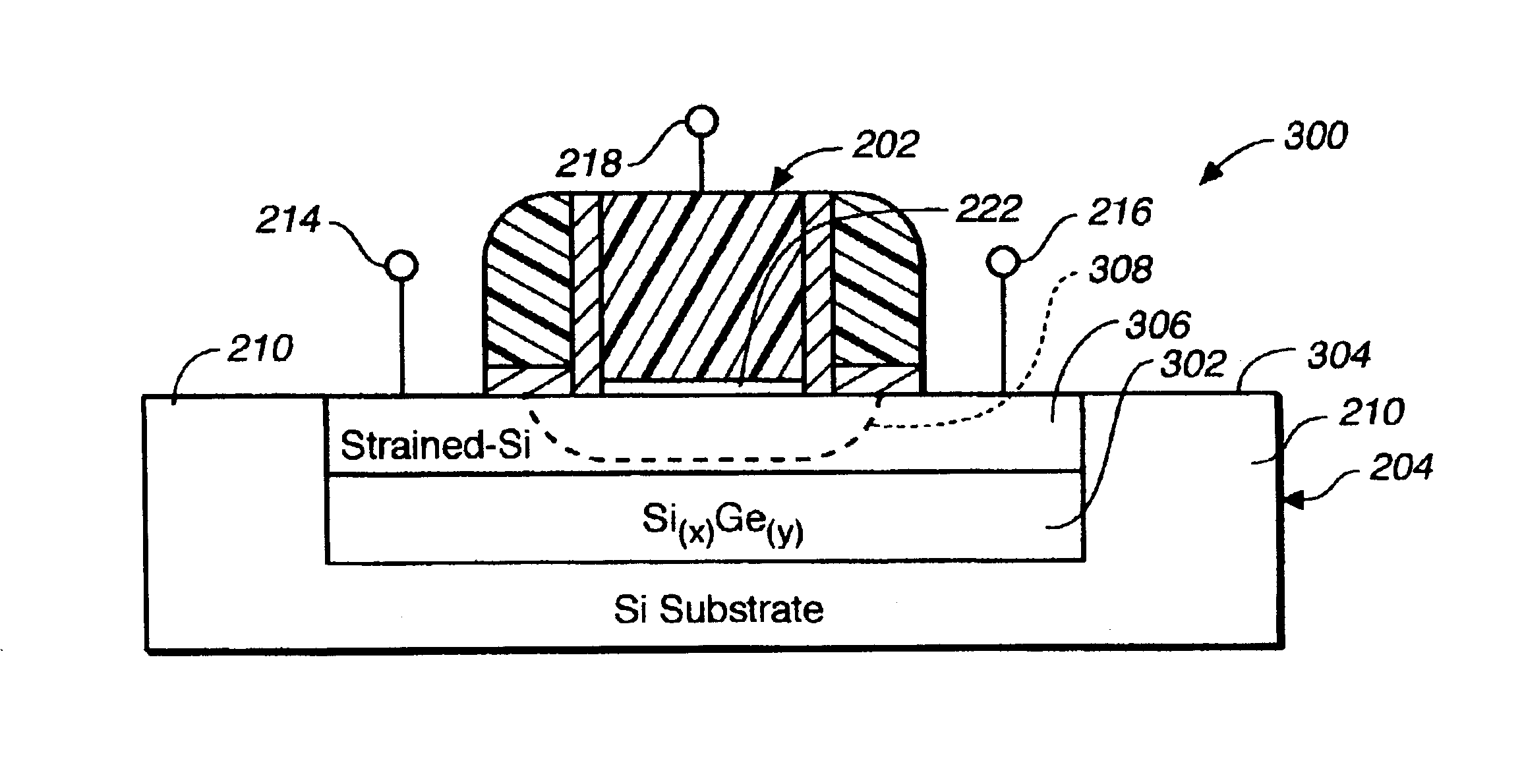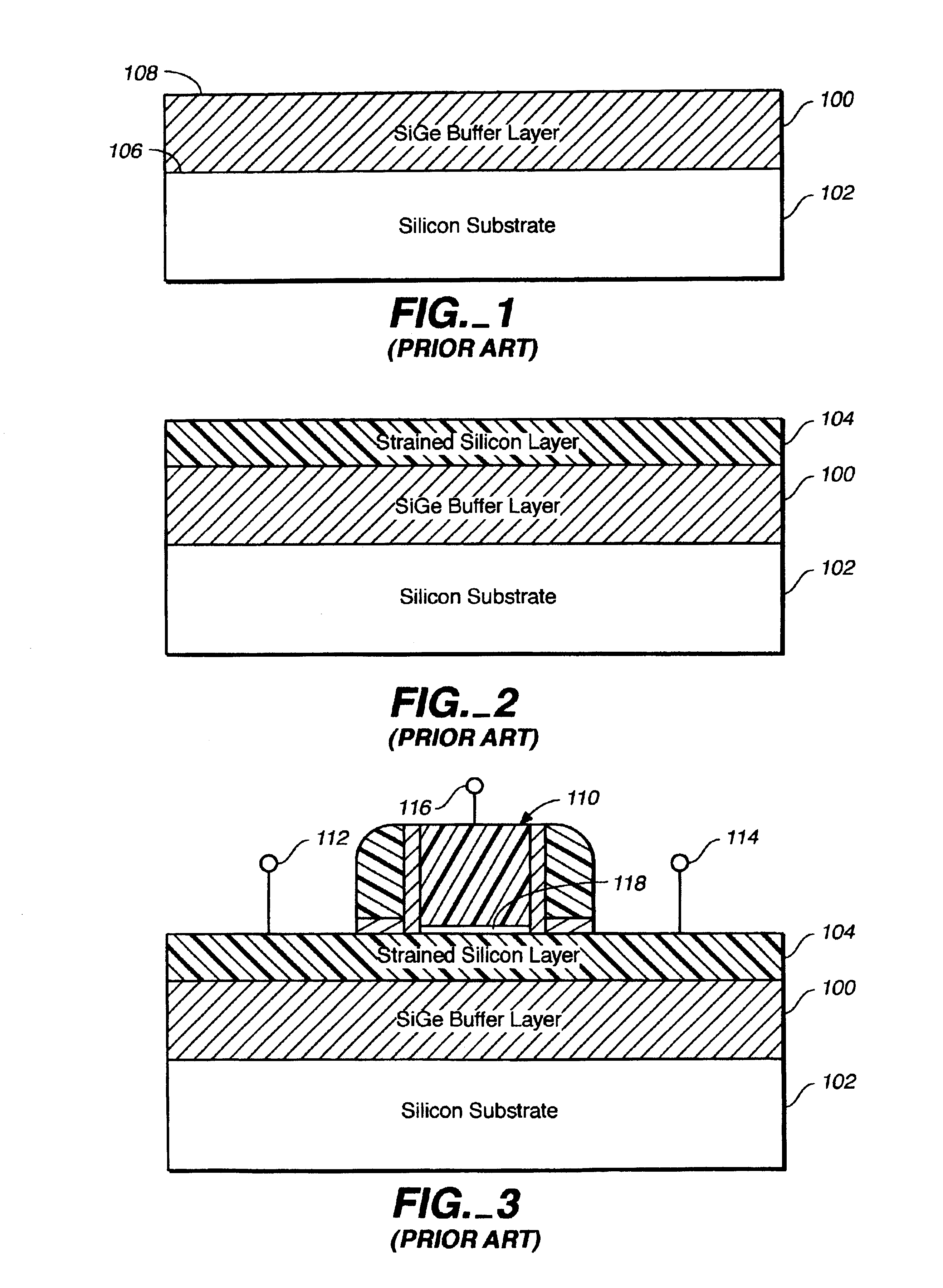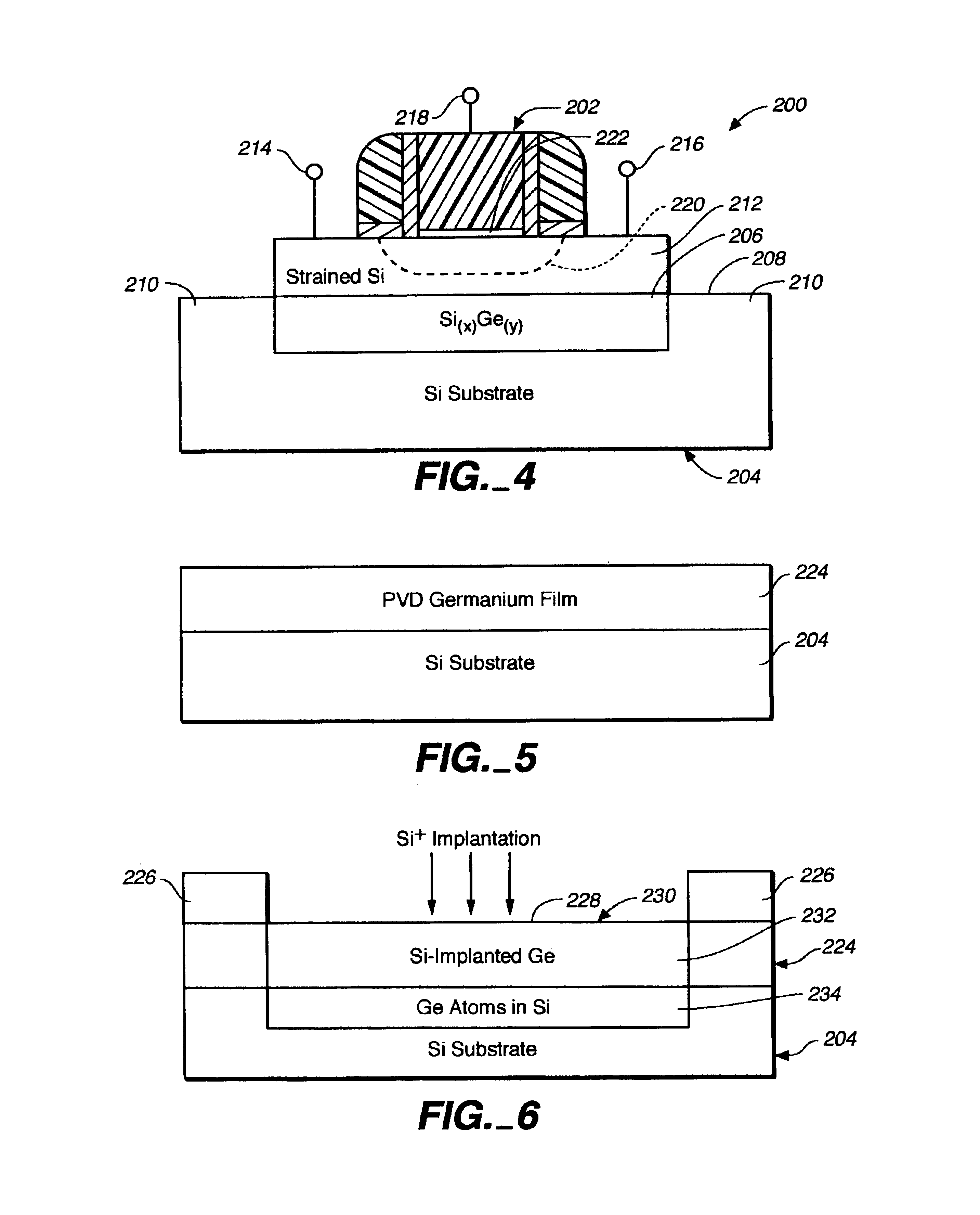Ion recoil implantation and enhanced carrier mobility in CMOS device
a cmos device and recoil technology, applied in the field of ion recoil implantation and enhanced carrier mobility in cmos devices, can solve the problems of increasing the time and cost of fabrication required to form the ic, unable to meet the high performance requirements, and the technique of scaling either the gate dielectric or the channel length or both has been difficult and/or impractical to achieve high performance requirements, etc., to achieve enhanced carrier mobility, carrier mobility, and high carrier mobilities
- Summary
- Abstract
- Description
- Claims
- Application Information
AI Technical Summary
Benefits of technology
Problems solved by technology
Method used
Image
Examples
Embodiment Construction
[0020]A portion of an integrated circuit (IC) 200 which incorporates the present invention and which is formed by the methodology of the present invention is shown in FIG. 4. The IC 200 includes a CMOS device 202 (such as a conventional CMOS transistor) formed above a silicon (Si) substrate 204 preferably, but not necessarily, with sub-0.1 micron technology. The Si substrate 204 generally includes an ion-implanted region 206 that extends below the surface 208 of the Si substrate 204. The ion-implanted region 206 is formed by an ion recoil procedure described below. The Si substrate 204 may also include conventional non-implanted regions 210, such as are used with conventional CMOS devices (not shown) and the channel regions thereof. A strained Si region 212 is formed on the ion-implanted region 206 and the CMOS device 202 is formed thereon. The strained Si region 212 is preferably formed by strained Si epitaxial growth or by other strained Si formation techniques. The CMOS device 20...
PUM
 Login to View More
Login to View More Abstract
Description
Claims
Application Information
 Login to View More
Login to View More - R&D
- Intellectual Property
- Life Sciences
- Materials
- Tech Scout
- Unparalleled Data Quality
- Higher Quality Content
- 60% Fewer Hallucinations
Browse by: Latest US Patents, China's latest patents, Technical Efficacy Thesaurus, Application Domain, Technology Topic, Popular Technical Reports.
© 2025 PatSnap. All rights reserved.Legal|Privacy policy|Modern Slavery Act Transparency Statement|Sitemap|About US| Contact US: help@patsnap.com



